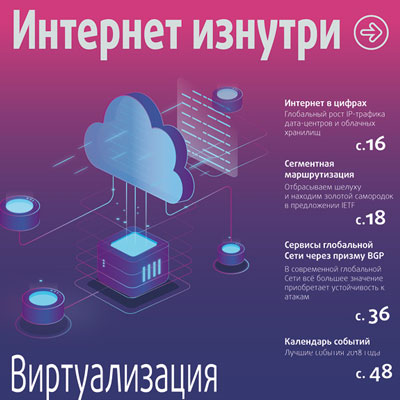Virtualization as a modern technology tool

“Virtualization is a popular term. Virtual space is infiltrating our lives more and more deeply, with virtual reality and artificial intelligence beginning to transform our tangible world. That's not to mention the Internet of Things – sensors and actuators create material links with the virtual space, gradually blurring the boundaries between the two worlds.
Although this is an exciting theme, this issue offers the other – though equally important – a type of virtualization: technological virtualization, which allows separating services, applications and the infrastructure itself from physical components. These technologies allow for the creation of highly flexible and scalable network systems without being bound to specific equipment or network technology used in a backbone infrastructure. These flexible systems serve as technological platforms for cloud particles, which are the basis for creating apps of virtual reality, artificial intelligence, big data, and the Internet of Things (IoT),” the magazine's editor-in-chief Andrei Robachevsky says in the introduction.
Ivan Pepelnyak, author of numerous books and articles on telecommunications, talks about optimization of data center infrastructure and the technologies used by data processing centers to provide client services.
Another popular writer on computer technologies, Adrian Farrel (not to be confused with actor Adrian Farrell), describes segment routing, a new technology of traffic engineering being developed by the SPRING working group as part of IETF. For segment routing, two forwarding plane encapsulations are defined: MPLS (Multiprotocol Label Switching) and IPv6 with the Segment Routing Extension Header. Farrel’s article describes the historical context of how this technology emerged, and the protocols of the forwarding plane and control plane of MPLS, and explains how segment routing works and talks about its unique advantages.
Packet Design Technical Director Cengiz Alaettinoglu, reassures readers by explaining that the term 5G slicing relates only to a network slice, which means a “dynamically constructed logical end-to-end network with an optimized topology created for a specific task – for a particular servicing class or a particular client”. A mobile network operator can “slice” network resources, such as routers and channels, together with computing resources and storage resources (for NFV and cloud apps) and allocated them to services. This technology emerged for mobile network in the 3GPP project.
In conclusion, the leading analyst for the Technical Center of Internet, Alexander Venedyukhin, talks about global network services from the perspective of BGP. This publication presents actual research that you should pay attention to.
The magazine blog: http://internetinside.ru






